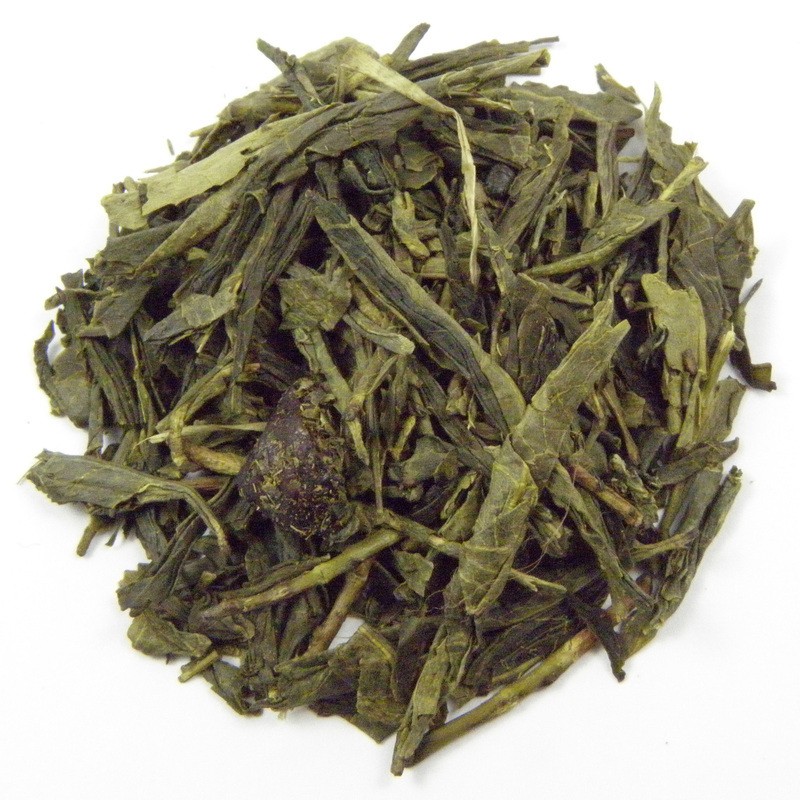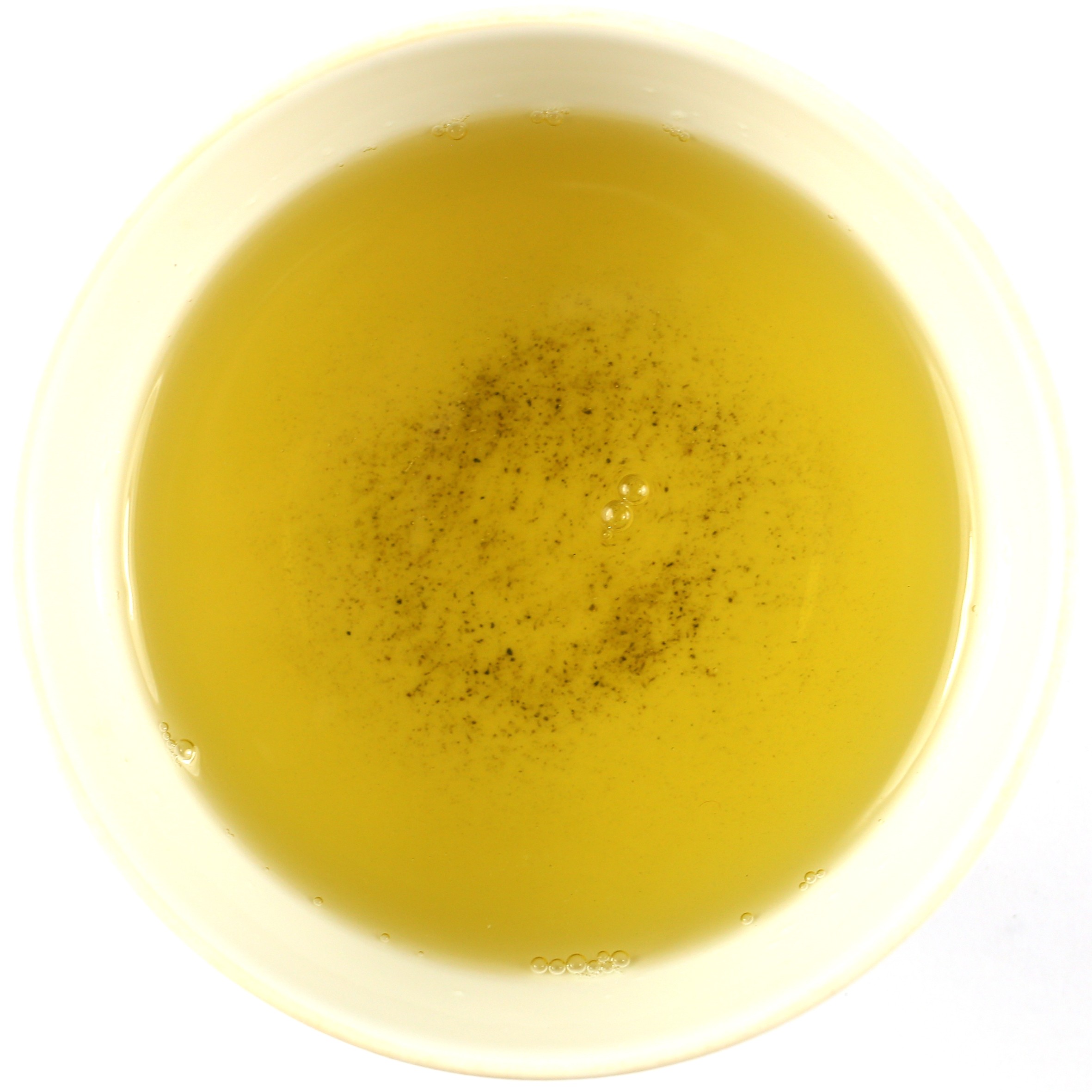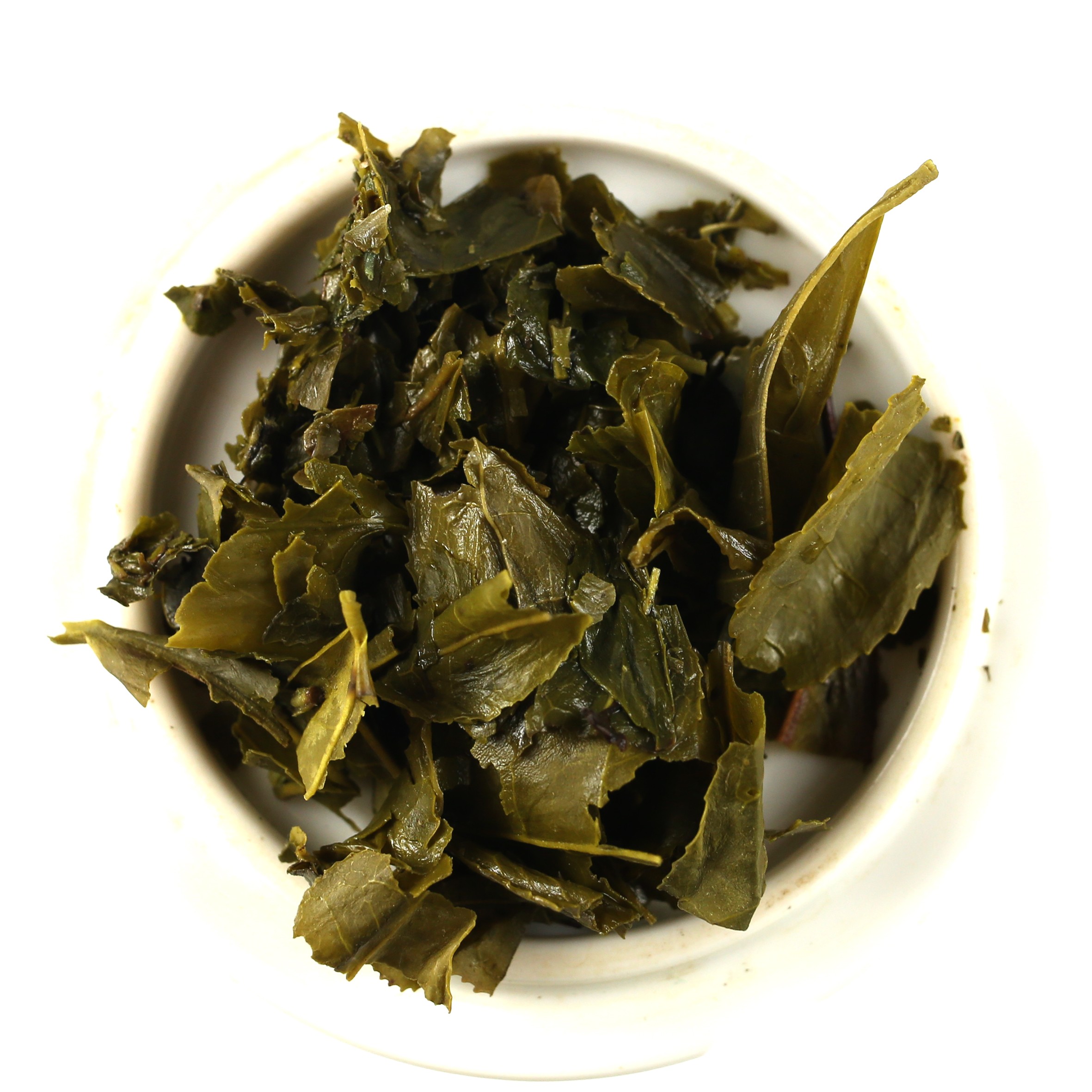Green Tea Brewing Guide

1 Teaspoon
Add 1 teaspoon per person and one for the pot.

70⁰c - 80⁰c
Boil using fresh water, at a temperature of 70⁰c - 80⁰c.

2 - 3 Mins
Steep for 2-3 minutes, depending on personal preference.
About Product
-
Product Description
Japanese Cherry Green Tea is, contrary to the name, a beverage of China. So, why “Japanese”? This name refers to the production of the Tea, which strictly adheres to Japanese methods. During its processing, factory workers steam the leaves instead of pan-firing them. Not only does this prevent oxidation, but also creates a distinctly “Japanese” flavour described as fresh and vegetal.
Combine these fresh and vegetal flavours with delicate notes of Cherry, and you have Japanese Cherry Green Tea. Indeed, there is nothing quite like it. We pack this Tea, like all of our Loose Teas, fresh to order. This is our way of guaranteeing both quality and consistency. But there’s more. Green Teas like this one can also promote healthy living!
According to the latest scientific research, Green Tea contains a wealth of vitamins, minerals and other antioxidants. These components combined can combat free radicals in the body. This can ultimately lower “bad” LDL cholesterol, enhance cognitive function and reduce the risks of developing type-2 diabetes. It can support the immune system, aid digestion and even promote weight loss. What more could you want from your morning cuppa’?
Japanese or Chinese Green Tea?
This infusion is, in fact, a Chinese Tea. What makes it truly special, however, is that the inspiration behind it originates from Japan. But as a rule of thumb, what’s the difference between Japanese and Chinese Green Tea? We’ve already talked about the steaming of the leaf, but that’s not all. In reality, there are multiple differences from plant to cup between both Teas.
First, the geography of China and Japan influence production significantly. At the most fundamental level, China is vastly larger in size compared to Japan. Essentially, this means that China has more space to grow and produce Tea. To make up for its lack of space, Japan uses technology. Japanese Tea fields are kept in tight rows, while China’s space allows for a wilder, freer approach to growing.
Additionally, Japan deploys specialised machinery during the picking season. China, in comparison, employs workers to hand-pick the leaves. The most discernible difference, however, is the shade-growing of Japanese Tea plants, which sees the leaves consistently kept in the shade for up to two weeks. This seldom occurs in China – except with our Japanese Cherry Green Tea.
Useful Information
Type of Tea: Green Tea.
Origin: China (produced to Japanese specifications).
Brewing Instructions: Brew with fresh water at temperatures between 75 and 80 degrees. Infuse for 2 to 3 minutes, being sure not to burn or over-brew the leaves.
How to Serve: Some add lemon, some add honey. Most, however, enjoy it without any accompaniments. The choice is, of course, yours.
Tasting Notes: This is a fulfilling beverage from start to finish. It offers distinct cherry aromas and flavours coupled with delicate-yet-sweet vegetal undertones.
Colour in Cup: Green liquor, light in tone.
Benefits of Japanese Cherry Green Tea
The antioxidants in this brew, particularly Epigallocatechin gallate (EGCG), can afford protection against a variety of skin disorders. This is according to a report published in the Journal of the American Medical Association of Dermatology in 2000.
Additionally, its tannins can shrink pores while reducing sebum (natural skin oil) production. This is why many health-conscious individuals drink Green Tea for treating acne.
-
Delivery Information
We offer reliable delivery services through Royal Mail to ensure that your orders reach you on time.
Here are the main points you should be aware of:
- Standard UK Delivery: £3.95 excluding delivery charge.
- Delivery Times: Orders are processed and dispatched within 2-5 working days but they may take longer during busy times. It is worth noting that all our orders are packed by hand in order to maintain the quality.
- Free Delivery: We are delighted to provide free shipping for UK orders over £35*. Moreover, customers from Europe can enjoy free shipping for any purchase above €75*. Furthermore, we offer free delivery in the USA for all purchases exceeding $125*. Please note terms and conditions may apply.
- Tracking: When your package is sent you will receive a tracking number via email so as to keep tabs of its progress.
International Shipping
We do ship worldwide meaning our products can be accessed by anyone around the world.
Here are some important details:
- Delivery Times: International deliveries vary based on destination, generally taking between 7-14 working days.
- Shipping Costs: International shipping costs are calculated at checkout based on your location and weight of your order. View full delivery charges for your location.
- Customs and Import Duties: Remember customs or import duties may exist depending on regulations in your country; these charges are borne by the customer.
Returns Policy
Your satisfaction is our top priority, however if for any reasons you’re not completely happy with your purchase, simply follow our returns procedure:
- Eligibility: Items returned within 30 days of receipt must remain unopened and in their original condition.
- Process: In order to return an item contact our customer service department using your unique order number after which detailed instructions will be given concerning returning them back to us securely.
- Refunds: Our aim is to refund you within 5-7 working days upon successful reception of returned goods. The refund amount will be credited to your original payment method.
For any other Enquiries or help please contact our Customer Support Team always at your service.
-
Product Reviews

 Loose Leaf Tea
Loose Leaf Tea Pyramids
Pyramids Tea Bags
Tea Bags Africa
Africa Assam
Assam Ceylon
Ceylon Chinese
Chinese Darjeeling
Darjeeling European
European Indian
Indian Japan
Japan Nepal
Nepal South East Asia
South East Asia Ayurveda Tea
Ayurveda Tea Black Tea
Black Tea Chai Tea
Chai Tea Flowering Tea
Flowering Tea Fruit Tisanes
Fruit Tisanes Green Tea
Green Tea Herbal Tea
Herbal Tea Matcha Tea
Matcha Tea Oolong Tea
Oolong Tea Organic Tea
Organic Tea Pu erh Tea
Pu erh Tea Rooibos Tea
Rooibos Tea White Tea
White Tea Asian Coffee
Asian Coffee Caribbean Coffee
Caribbean Coffee Central American Coffee
Central American Coffee South American Coffee
South American Coffee Coffee Blends
Coffee Blends Decaffeinated Coffee
Decaffeinated Coffee Espresso Coffee
Espresso Coffee Ethically Sourced Coffee
Ethically Sourced Coffee Flavoured Coffee
Flavoured Coffee Organic Coffee
Organic Coffee Single Origin Coffee
Single Origin Coffee Chocolate 1
Chocolate 1 Chocolate 2
Chocolate 2 Chocolate 3
Chocolate 3 Chocolate 4
Chocolate 4 Chocolate 5
Chocolate 5 Chocolate 6
Chocolate 6 Chocolate 7
Chocolate 7 Chocolate 8
Chocolate 8 Chocolate 9
Chocolate 9 Loose Tea Filters
Loose Tea Filters Tea Accessories
Tea Accessories Tea Bricks
Tea Bricks Tea Caddies
Tea Caddies Tea Caddy Spoons
Tea Caddy Spoons Tea Gift Ideas
Tea Gift Ideas Tea Infusers
Tea Infusers Tea Strainers
Tea Strainers




